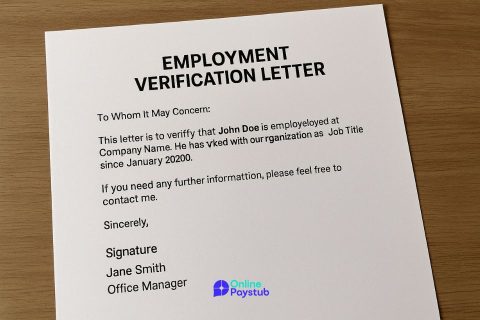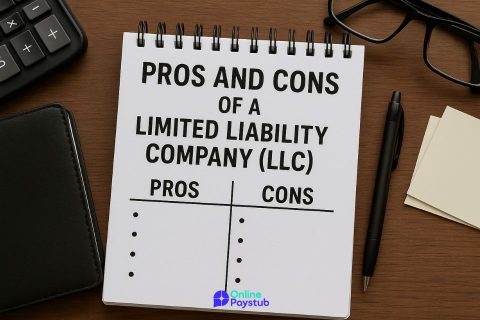Excellence in business is not a coincidence; it is the result of deliberate, disciplined, and strategic choices. Organizations that stand out consistently operate with a clear vision, measurable standards, and a commitment to constant evolution. In today’s highly competitive landscape, being good is no longer good enough. The companies that thrive are those that commit to exceptional standards across leadership, operations, and culture.
This guide explores ten actionable methods that help businesses move beyond average and embed excellence into every layer of their organization. Each method is designed to be practical, measurable, and aligned with long-term success.
1. Start With a Clear Definition of Excellence in Business
Before a company can pursue excellence, it must first define what excellence means within its own context. Without a shared understanding, efforts become fragmented and expectations misaligned. Excellence is not simply about outperforming competitors or increasing revenue it’s about delivering consistent value, maintaining high standards, and integrating purpose-driven operations.
A well-defined vision of excellence typically includes measurable goals, customer satisfaction benchmarks, ethical leadership principles, and a framework for quality assurance. Organizations that lack this clarity often fall into a cycle of reactive decisions and short-term thinking. On the other hand, those that articulate excellence from the outset create a foundation for strategic alignment across departments.
Clarity at this stage also enables better use of models like the EFQM Excellence Model or the Malcolm Baldrige National Quality Award criteria. These frameworks serve as reference points, guiding leadership and teams toward a unified direction and measurable outcomes.
Excellence, when clearly defined, moves from being an abstract idea to a core component of the business identity.
2. Establish Leadership Accountability Across All Levels
A company’s commitment to excellence begins and ends with leadership. Without accountability at the top, organizational standards often drift, and culture suffers. Excellence must be modeled by those in charge not just communicated, but demonstrated in daily actions and decisions.
Leadership accountability means setting clear expectations, tracking performance through transparent metrics, and aligning decisions with organizational values. It also requires leaders to own failures as much as successes. In businesses that embrace this approach, excellence is not confined to executive speeches or policy documents; it becomes an observable behavior.
High-performing organizations often implement formal accountability structures: regular leadership reviews, 360-degree feedback systems, and role-based KPIs tied directly to excellence objectives. These tools help ensure that leadership isn’t immune to the standards it expects others to meet.
Additionally, leadership teams must be empowered to act on performance insights. Without this empowerment, even the most insightful feedback and data become irrelevant. True accountability means leaders are responsible for both setting direction and removing the obstacles that prevent teams from delivering their best work.
By holding leadership to a measurable standard of excellence, businesses create a ripple effect that shapes culture, boosts credibility, and accelerates long-term success.
3. Implement a Framework for Continuous Improvement
Excellence is not a fixed state it evolves. Businesses that sustain high performance over time are those that continuously question, refine, and optimize their operations. This mindset requires a structured framework that encourages learning, adaptation, and innovation across all departments.
Frameworks such as Total Quality Management (TQM) or Lean & Six Sigma offer practical tools for embedding improvement into daily workflows. These systems emphasize data-driven decision-making, root cause analysis, and cycle-based evaluations that identify areas for refinement without disrupting core functions.
Continuous improvement depends heavily on internal feedback loops and employee participation. When individuals at every level contribute insights, organizations gain a more comprehensive understanding of where inefficiencies lie and how to address them. The process is not about overhauling everything overnight, but about making incremental, consistent upgrades that compound into measurable progress.
Successful companies allocate resources time, training, and tools to make continuous improvement part of the culture, not a one-off initiative. They develop cross-functional teams, track progress through targeted KPIs, and reward innovation that aligns with strategic goals.
The result is a business environment where complacency is replaced with curiosity, and where the pursuit of better never stops.
4. Align Operational Goals With Strategic Excellence
Operational goals often dictate the rhythm of daily business activity. However, when these goals function in isolation from broader strategic priorities, excellence becomes fragmented. To achieve consistent and meaningful outcomes, there must be alignment between what teams execute and what the organization ultimately strives to become.
Strategic alignment begins with clarity. Teams should understand not just their individual objectives, but how those objectives contribute to long-term excellence. This requires transparent communication from leadership and measurable linkages between key performance indicators and overarching company values.
Businesses that align effectively often use strategic mapping or balanced scorecards to connect departmental output with strategic outcomes. This approach ensures that every project, process, and milestone supports the company’s excellence commitments. Operational misalignment, by contrast, tends to generate siloed thinking, wasted effort, and conflicting priorities.
When alignment is achieved, employees gain a clearer sense of purpose, decision-making becomes more focused, and performance improves across the board. Excellence, in this context, is no longer aspirational it becomes operational.
5. Foster a High-Performance and Customer-Centric Culture
A culture that values both performance and the customer experience forms the backbone of business excellence. High-performing companies don’t rely solely on individual talent they cultivate environments where consistent execution, accountability, and responsiveness to customer needs are the norm.
Culture is built through daily habits, shared expectations, and clearly defined behaviors. When performance is rewarded and customer outcomes are prioritized, the organization begins to internalize excellence as a natural operating standard. This requires more than motivational slogans or surface-level engagement. It involves structural investment in training, communication, and recognition systems that reinforce desired behaviors.
Customer-centricity is not just a department’s responsibility. Every team, from product development to operations, should understand how their actions affect the end-user experience. Companies that excel in this area often implement voice-of-the-customer programs, real-time feedback analysis, and cross-functional alignment around service expectations.
Sustaining such a culture also means confronting behaviors that undermine excellence. Whether it’s missed deadlines, internal politics, or neglecting customer insights, performance drift must be addressed early and decisively. Leaders play a critical role in modeling this mindset and ensuring cultural consistency as the organization grows.
Organizations that build a high-performance, customer-first culture are better positioned to respond to change, retain top talent, and earn long-term loyalty.
6. Use Feedback Loops to Guide Smart Decision-Making
Sustainable excellence requires informed decisions, and informed decisions stem from meaningful feedback. Businesses that actively build and maintain internal and external feedback loops position themselves to adapt faster, improve continuously, and avoid costly missteps.
Effective feedback loops capture input from multiple sources: employees, customers, partners, and operational data. This information is then processed and translated into actionable insights. The value lies not only in collecting feedback, but in how the organization responds to it. Insight without execution adds no value.
Structured methods such as customer satisfaction tracking, employee pulse surveys, and post-project reviews provide a steady stream of data that reflects real-world performance. These mechanisms reveal both what’s working and where adjustments are needed.
Smart organizations embed these loops into routine processes rather than treating them as periodic events. For example, feedback is analyzed during leadership meetings, tied to performance evaluations, and used to inform budget allocation and strategic planning.
Incorporating feedback into the decision-making process does more than refine tactics. It signals to stakeholders—internal and external—that the business is attentive, agile, and committed to better outcomes. Over time, this creates a culture where accountability, transparency, and learning are not optional, but expected.
7. Standardize Excellence With Recognized Quality Models
Consistency is a core attribute of excellence. While innovation and agility are essential, without standardized practices, even high-performing teams can produce uneven results. To maintain a uniform standard of quality across operations, many organizations adopt recognized models that formalize expectations and practices.
Models such as the ISO 9001 Standard, the EFQM Excellence Model, or the Malcolm Baldrige National Quality Award criteria offer structured approaches for integrating quality management into every layer of an organization. These frameworks provide more than checklists they establish principles that guide leadership behavior, operational discipline, and strategic clarity.
By adopting a quality model, businesses create shared language and measurable benchmarks. Processes become replicable, audits more efficient, and accountability systems clearer. This reduces ambiguity and sets expectations not just for what success looks like, but how it should be achieved.
Moreover, standardization supports scaling. As companies expand, whether across markets or geographies, a unified quality system ensures that excellence is not diluted by growth. It also becomes easier to train new employees, onboard partners, and report progress to stakeholders.
Excellence models do not eliminate the need for flexibility; they provide a foundation upon which innovation and continuous improvement can reliably take place. Organizations that standardize their pursuit of excellence are more resilient, more credible, and better positioned to lead in their industries.
8. Drive Excellence Through Employee Development Programs
Excellence is not a static target; it evolves with the people who carry it forward. A business can only achieve and sustain high standards if its workforce is equipped to meet them. This makes structured employee development a non-negotiable component of operational excellence.
Development programs whether technical training, leadership coaching, or cross-functional learning empower employees to solve problems, take initiative, and adapt to changing demands. They also reinforce a culture of continuous learning, which is essential for maintaining a competitive edge.
Well-designed programs align with the organization’s excellence goals. For example, if customer satisfaction is a strategic priority, training should focus on service quality, communication, and responsiveness. If process optimization is the aim, development might emphasize analytical thinking, software skills, or lean methodologies.
High-performing companies treat development as an investment rather than an expense. They allocate budget and time, track participation and outcomes, and recognize progress. Importantly, they embed learning into the rhythm of work instead of isolating it as a separate activity.
Development also impacts retention. Talented individuals are more likely to stay with organizations that invest in their growth. This stability contributes to stronger teams, institutional knowledge, and consistent delivery key pillars of excellence.
Organizations that prioritize employee development build not only better individuals, but also more capable, resilient, and performance-oriented cultures.
9. Measure What Matters: Tracking Excellence KPIs
Excellence must be observable to be sustainable. Without clear metrics, organizations risk mistaking activity for progress. Key performance indicators (KPIs) serve as the bridge between strategic vision and daily execution, offering tangible evidence of whether excellence is being achieved or simply assumed.
The selection of KPIs should be intentional. Generic metrics offer little insight into unique operational dynamics. Instead, effective organizations define KPIs that align with their values, strategic goals, and customer expectations. These may include indicators such as customer satisfaction scores, error rates, employee engagement levels, or operational efficiency ratios.
Measurement without interpretation, however, offers limited value. KPIs must be monitored in context, discussed regularly, and tied to decision-making processes. Leadership teams use this data to validate what’s working, identify risks, and refine priorities.
Moreover, transparency in measurement builds trust. When performance data is shared across teams, it encourages ownership and collaboration. Employees understand how their contributions affect outcomes, and managers can address challenges proactively.
High-performing companies don’t just track performance they act on it. They use real-time dashboards, periodic reviews, and continuous improvement cycles to ensure that the pursuit of excellence remains dynamic and responsive.
By measuring what matters, businesses not only validate their efforts but also create a disciplined framework that supports long-term excellence.
10. Sustain Long-Term Excellence Through Adaptive Thinking
Excellence is not a destination but a continuous journey shaped by change. Markets shift, technologies evolve, and customer expectations rise. Organizations that sustain excellence over time do so by cultivating adaptive thinking a mindset that embraces uncertainty, learns from disruption, and responds with intention.
Adaptive thinking involves strategic foresight, scenario planning, and a willingness to challenge existing assumptions. Businesses that excel in this area scan their environment for signals of change and adjust course before problems escalate. This agility protects core strengths while opening pathways for innovation.
Leadership plays a key role in fostering adaptability. Teams must feel safe to experiment, question conventional methods, and present new ideas without fear of failure. Psychological safety, when paired with performance discipline, creates a powerful engine for progress.
Additionally, adaptive organizations often diversify their inputs. They gather insights not only from internal data, but from customers, industry peers, and emerging trends. This broad perspective allows them to recalibrate faster and with greater confidence.
Long-term excellence depends on the ability to remain relevant. By embedding adaptability into their culture, systems, and leadership practices, businesses can weather volatility while staying true to their core values. Excellence, in this context, is not maintained by resisting change but by evolving with it.




No comments to show.